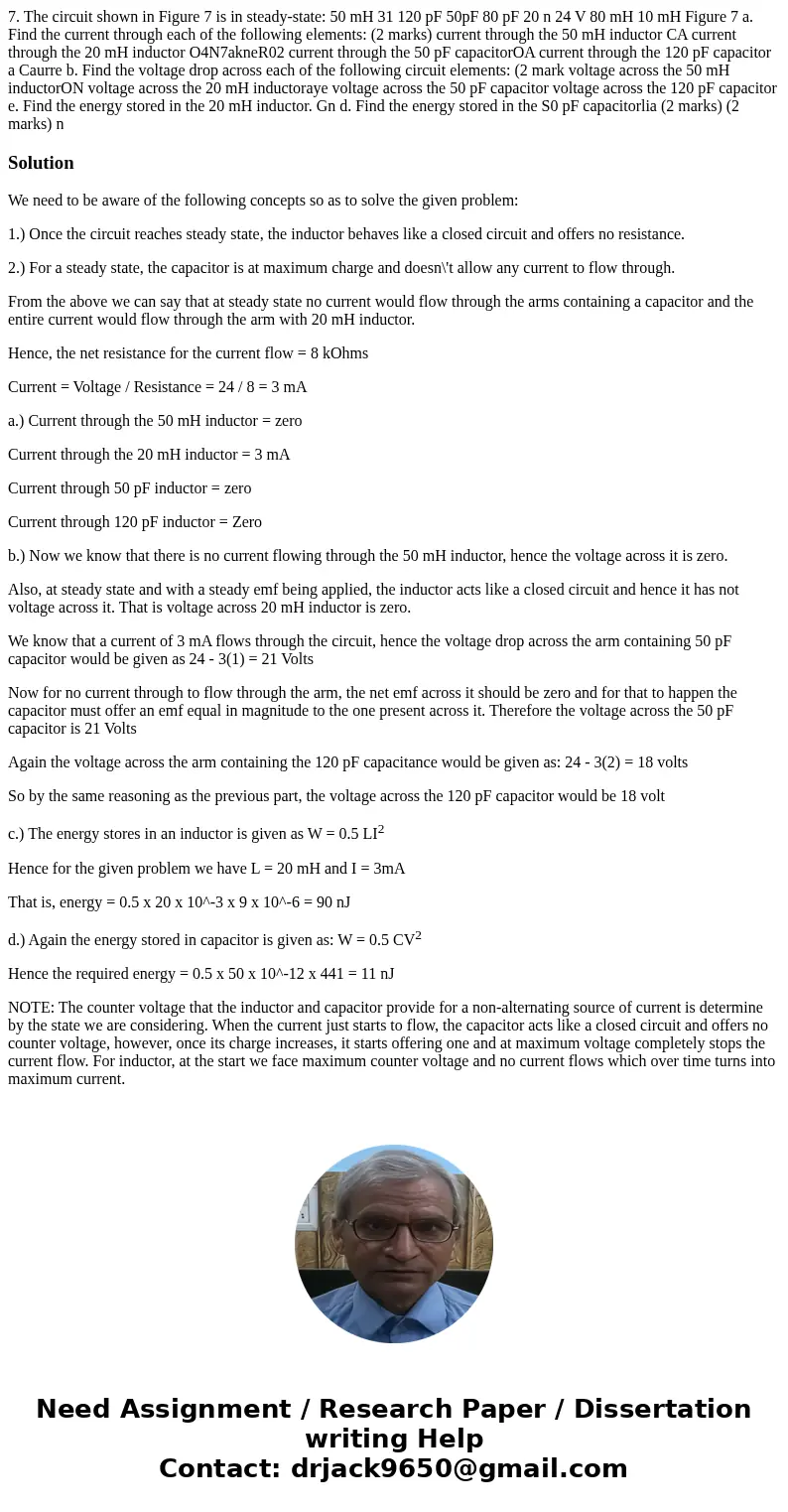7 The circuit shown in Figure 7 is in steadystate 50 mH 31 1
Solution
We need to be aware of the following concepts so as to solve the given problem:
1.) Once the circuit reaches steady state, the inductor behaves like a closed circuit and offers no resistance.
2.) For a steady state, the capacitor is at maximum charge and doesn\'t allow any current to flow through.
From the above we can say that at steady state no current would flow through the arms containing a capacitor and the entire current would flow through the arm with 20 mH inductor.
Hence, the net resistance for the current flow = 8 kOhms
Current = Voltage / Resistance = 24 / 8 = 3 mA
a.) Current through the 50 mH inductor = zero
Current through the 20 mH inductor = 3 mA
Current through 50 pF inductor = zero
Current through 120 pF inductor = Zero
b.) Now we know that there is no current flowing through the 50 mH inductor, hence the voltage across it is zero.
Also, at steady state and with a steady emf being applied, the inductor acts like a closed circuit and hence it has not voltage across it. That is voltage across 20 mH inductor is zero.
We know that a current of 3 mA flows through the circuit, hence the voltage drop across the arm containing 50 pF capacitor would be given as 24 - 3(1) = 21 Volts
Now for no current through to flow through the arm, the net emf across it should be zero and for that to happen the capacitor must offer an emf equal in magnitude to the one present across it. Therefore the voltage across the 50 pF capacitor is 21 Volts
Again the voltage across the arm containing the 120 pF capacitance would be given as: 24 - 3(2) = 18 volts
So by the same reasoning as the previous part, the voltage across the 120 pF capacitor would be 18 volt
c.) The energy stores in an inductor is given as W = 0.5 LI2
Hence for the given problem we have L = 20 mH and I = 3mA
That is, energy = 0.5 x 20 x 10^-3 x 9 x 10^-6 = 90 nJ
d.) Again the energy stored in capacitor is given as: W = 0.5 CV2
Hence the required energy = 0.5 x 50 x 10^-12 x 441 = 11 nJ
NOTE: The counter voltage that the inductor and capacitor provide for a non-alternating source of current is determine by the state we are considering. When the current just starts to flow, the capacitor acts like a closed circuit and offers no counter voltage, however, once its charge increases, it starts offering one and at maximum voltage completely stops the current flow. For inductor, at the start we face maximum counter voltage and no current flows which over time turns into maximum current.

 Homework Sourse
Homework Sourse